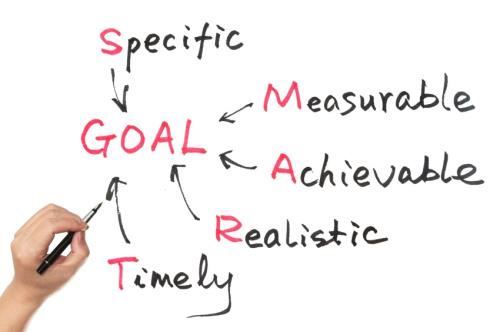 If your company is like many other small and mid-sized businesses, your employees represent both your organization's biggest line item expense and your most valuable asset. This means your company's productivity and its profitability depend on making sure all of your workers perform up to their full potential.
If your company is like many other small and mid-sized businesses, your employees represent both your organization's biggest line item expense and your most valuable asset. This means your company's productivity and its profitability depend on making sure all of your workers perform up to their full potential.
This is, in essence, the foundation of our mission at Churchill Leadership Group – to share our strengths-based philosophy for leadership, team performance and increasing employee engagement. We understand that companies must get the most out of each unique employee, including company leaders. Our goal is to help companies understand and accelerate the natural talents of their employees and build learnable skills and knowledge to help accelerate the growth of the organization.
The need to effectively leverage the potential of employees is even more critical for small and mid-sized businesses because it is harder to compete with large companies when it comes to technology, physical infrastructure, or financial resources. To survive in today's marketplace, small to mid-sized businesses must find ways to be smarter, more productive, and more cohesive than their larger competitors.
Goal Setting
In addition to wanting to maximize your team's potential, you need to be able to channel it in a very focused way using goals and organizational goal alignment. Studies show a dramatic increase in both worker and business performance when an organization effectively sets and closely ties individual employee goals to the company's overall strategy. Yet amazingly, a mere 7%* of employees fully understand their company's business goals and strategies and what's expected of them in order to help achieve company business goals.
For years in Fortune 500 companies, I led teams using the "Balanced Score Card," just one way to simplify and align each individual's purpose to the bigger picture. A study in the UK** has shown that:
-
If you commit your goals to writing, then you are 40% more likely to achieve them.
-
If you tell someone else, then you are 60% more likely to achieve them.
-
If you have a coach, then you are 95% more likely to achieve your goals.
3 Business Benefits of Setting and Aligning Organizational Goals
1. Increased Operating Margins
Employees who clearly understand their individual goals and how they relate to those of the company naturally become more engaged with their work. Once employees see how they can make a direct contribution to the company's success, they begin to focus on finding ways to work smarter and more efficiently. This boost in employee productivity will naturally lead to increased operating margins and profitability for your company.
To achieve these results, your company must put a performance management process in place that:
-
Increases employee engagement with "SMART" goals
-
Provides visibility up, down and across reporting levels
-
Create shared accountability between employees by "cascading" goals
-
Communicate expectations and recognition during each phase of goal completion
2. Quicker Execution of Company Strategy
Tighter goal alignment and goal visibility allows for quicker execution of company strategy by enabling your management team to more effectively allocate labor resources across various projects. By exposing redundant business initiatives, it also increases overall efficiency by ensuring employees are not duplicating the efforts of others. Goal alignment strengthens the leaders at your company by allowing them to:
3. Reduced Employee Turnover
The business value of having employees engaged in their work cannot be overestimated. Gallup's ongoing workplace research has shown that companies with large numbers of dissatisfied workers experience greater absenteeism and lower productivity — as well as a 51% higher employee turnover rate***. Fortunately, clear goal alignment can help remedy this situation by contributing to greater employee ownership in your company's ultimate success. Goal alignment also lets you establish a true pay-for-performance culture at your company by providing the foundation for closely linking reward systems with both individual and team performance.
Setting Effective Goals
To be effective, goals must serve both the needs of the company and those of the employees. For the company, goals must contribute directly to the short- and long-term business strategies. For employees, goals must be clear, objective and understandable. Otherwise, they will quickly become disengaged.
To achieve "goal alignment" at your organization, you must first clearly communicate strategic business objectives across your entire company. Interdepartmental goal visibility can also help speed the process of alignment. By allowing managers to access and see the goals of other departments, your company can greatly reduce goal redundancies and conflicts throughout your organization. Additionally, many employee objectives are not entirely under the control of one individual. Enabling and even mandating that individuals assign some goals to two or more people increases engagement and shared accountability throughout the organization. Goal sharing also helps department heads or team leads find ways to better support each other, as well as identify areas where they may be inadvertently working against each other.
Once company-wide goals have been established, managers can then set goals for their individual departments that clearly support overall business strategies. Major job functions and responsibilities can serve as a general framework when writing employee goals. Managers must remember to communicate to staff members not only what is expected of them, but also how each task is to be completed. For example, a customer service rep might be given the goal to boost customer retention (the "what") by improving customer service (the "how"). To be most effective, goals should be S.M.A.R.T:
SPECIFIC
Specific goals let people know exactly what's expected of them with no room for misinterpretation. Specific goals should be able to answer the following:
-
Who is responsible?
-
What is to be accomplished?
-
Which requirements/constraints are involved?
-
Where is this to be completed?
-
Why is this important or beneficial?
MEASURABLE
When setting goals, you must also set specific criteria for measuring progress against those goals. This gives your employees a way to stay on track, aim for target dates and reach milestones that will serve as ongoing motivation.
ATTAINABLE
Setting overly lofty goals that are truly unattainable is actually demotivating to your employees rather than motivating. By setting ambitious, realistic goals, you will inspire your employees to fully leverage their talents to achieve them.
RELEVANT
Employees must be able to see how a specific goal is relevant to them and to the work they perform every day. Plus by keeping goals relevant, you will help employees better understand their connection to your company's objectives and the strategic importance of their individual goals.
TIMELY
To be most effective, goals must be structured around a specific timeframe to provide a sense of urgency. This serves to motivate individuals to begin working on their goals as soon as possible.
Leveraging Technology to Achieve Goal Alignment
Managers need tools that can help them communicate and align goals across your organization with greater clarity and efficiency. Fortunately, a new breed of web-based, automated performance management systems that include goal alignment are now available to companies of all sizes. And today, small and mid-sized businesses are increasingly using these automated systems to increase productivity — and to improve their bottom lines.
*Kaplan & Norton, "The Strategy-Focused Organization," Harvard Business School Press 2001
** Evans, C 2005, Personal and Business Coaching, United Kingdom.
*** Gallup Meta analysis
 Written by Jayne Jenkins, CEO Churchill Leadership Group-Jayne is a Fortune 500 Leadership business veteran working for some of the largest companies in the world including Exxon, AstraZeneca and Sanofi. For over 23 years, Jayne refined her team development and leadership capabilities and built finely-tuned sales teams, responsible for delivering annual sales over $600M. Through her effective leadership and collaboration, Jayne and her team took market share of a $4Bn business unit from 32 to 41% in just four years. Jayne has also been successful in Marketing, Strategic Operations and Organization Development, so she understands many key business areas. Jayne founded Churchill Leadership Group, an Executive Consulting and Coaching Company. Churchill’s mission is to increase organizational effectiveness by growing leadership skills and employee engagement through a focus on STRENGTHS for sustainable results. This enables corporate teams, across industries, to enjoy outstanding results. Jayne worked with Marcus Buckingham, renowned author/STRENGTHS expert (Now Discover Your Strengths/First Break All the Rules/STAND OUT), and his team to become a “Master Strengths Coach and Workshop Facilitator.”
Written by Jayne Jenkins, CEO Churchill Leadership Group-Jayne is a Fortune 500 Leadership business veteran working for some of the largest companies in the world including Exxon, AstraZeneca and Sanofi. For over 23 years, Jayne refined her team development and leadership capabilities and built finely-tuned sales teams, responsible for delivering annual sales over $600M. Through her effective leadership and collaboration, Jayne and her team took market share of a $4Bn business unit from 32 to 41% in just four years. Jayne has also been successful in Marketing, Strategic Operations and Organization Development, so she understands many key business areas. Jayne founded Churchill Leadership Group, an Executive Consulting and Coaching Company. Churchill’s mission is to increase organizational effectiveness by growing leadership skills and employee engagement through a focus on STRENGTHS for sustainable results. This enables corporate teams, across industries, to enjoy outstanding results. Jayne worked with Marcus Buckingham, renowned author/STRENGTHS expert (Now Discover Your Strengths/First Break All the Rules/STAND OUT), and his team to become a “Master Strengths Coach and Workshop Facilitator.”
Do you have a question for Jayne? Post it in our Senior Manager Community and she will be happy to help: Ask an Expert
Did you find this article informative? Let us keep you up-to-date on all of our training articles. Please sign up for our newsletter today!
Here are some related articles you may be interested in:
Managing Conflict: Six Things NOT to Do
Lost in Translation, Again!
Why is Talent Management Important in 2014? Part 1
Why is Talent Management Important in 2014? Part 2
Leading Through Change: Persistence and change agents are vital!
About ManagingAmericans.com
We are America’s Management & Leadership Center for Professional Development. Our well-rounded business content is designed for Leaders & Managers to implement change with ease & improve accountability amongst their teams. Here you’ll find Articles from 30+ Expert Consultants, Coaches & Thought Leaders, access practical Business Templates, learn new skills & connect to our Expert Panel to answer your organizational challenges.